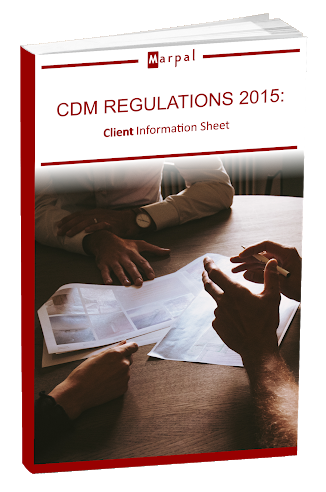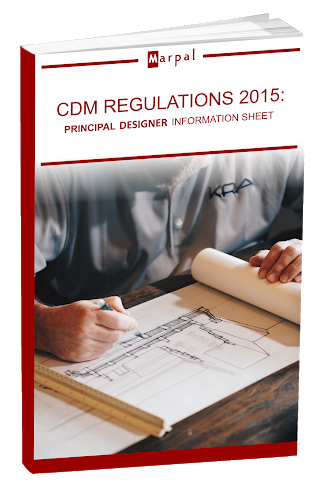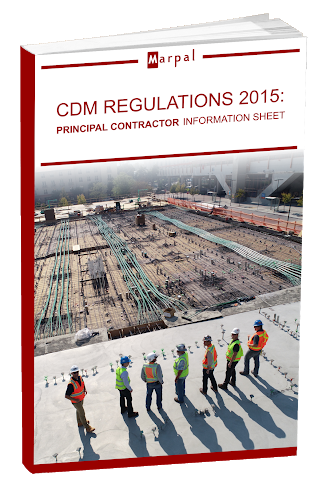
The CDM Regulations 2015 came into force on 6th April 2015 and replaced the CDM Regulations 2007; these being the main set of regulations for managing the health, safety and welfare on construction projects.
The CDM Regulations apply to all building and construction work and includes new build, demolition, refurbishment, extensions, conversions, repair and maintenance, and places responsibility for managing health and safety of a construction project on three main duty holder; the Client, the Principal Designer and the Principal Contractor.
The overall aim of the regulations is to make health and safety an essential and integral part of the planning and management of projects, so as to reduce the health and safety risks of those who work on the structure, those who will use it as a work place, or others who work on the structure once it’s complete.
WHAT COMMERCIAL CLIENTS NEED TO KNOW
Commercial Clients are those whose project is associated with a business or other undertaking; whether for profit or not. If you are having construction work done, the CDM Regulations 2015 place a number of specific duties on you, as a Construction Client. The extent of these duties will be dependent upon the type, nature and complexity of the project. For many projects you will need a CDM Advisor/Consultant to help you comply with these duties.
Regardless of the size or duration of your project, the CDM Regulations separates construction projects into two catagories, projects with only one contractor or projects that are likely to involve more than one contractor (this will be the majority of projects). If you are in doubt, you should assume that the project will require more than one contractor.
YOUR DUTIES AS A CONSTRUCTION CLIENT
As a commercial Client there are duties imposed on you that apply to ALL projects and then additional duties that apply to projects with more than one contractor.
On ALL projects you will need to:-
- Appoint or engage people and organisations that have sufficient health and safety skills, training, knowledge and experience to enable them to carry out the work they have to do and are adequately resourced;
- Ensure that all appointments are made early enough to enable those appointed to carry out their duties effectively;
- Make suitable arrangements for managing the project and make sure they remain in place and are reviewed throughout the project;
- Make sure sufficient time and resources are allocated for each stage of the project, including design, preparation for starting on site and the construction work itself;
- Be satisfied that suitable welfare facilities are provided by Contractors from the start and throughout the construction phase;
- Provide pre-construction information as soon as practicable to every designer and contractor you appoint, so that they can comply with their duties;
- Ensure that, before the construction phase commences, a suitable Construction Phase Plan is drawn up by the contractor;
- Notify the Health and Safety Executive of the project if the construction phase is likely to last longer than 500 person days or last longer than 30 days with 20 or more people on site.
It’s worth noting that the Regulations mostly require you to ensure that a number of things are done, rather than actually do them yourself.
On projects where it is likely that there will be more than one trade contractor working, you MUST, in addition to those duties listed above, make sure you:-
- Appoint a Principal Designer. This should be the Lead Designer, the Designer with control over the pre-construction phase (i.e. the design phase), the appointment must be in writing;
- Appoint a contractor as ‘Principal Contractor’ as soon as is practicable before the construction phase begins, to plan, manage and monitor the construction phase, the appointment must be in writing;
- Ensure that the Principal Designer and Principal Contractor comply with their duties (NB/ The Principal Designer is responsible for coordinating the Pre Construction Phase, whilst the Principal Contractor is responsible for the Construction Phase).
- Ensure that the Principal Designer prepares a Health and Safety File for the project. Agree the contents and format of the Health & Safety File and provide the Principal Designer with relevant information for this document. The Principal Designer will ensure the ‘Health & Safety File’ is prepared, reviewed or updated (as appropriate) ready for handing over to you on completion of the work. This is an important legal document;
- Keep the Health & Safety File safe and make it available to anyone who may need it in the future, and explain its purpose to them. You must also update it whenever necessary. When you dispose of your interest in the structure you must also pass on the File to those acquiring it.
WHY YOU MUST COMPLY?
You could face criminal prosecution by the HSE;
- If you fail to appoint a ‘Principal Designer’ or ‘Principal Contractor’ you will be legally liable for their duties and will be deemed to be carrying them out;
- You could leave yourself open to potentially very expensive legal action;
- Failure to comply may indirectly result in a fatality or major injury; the principal aim of these regulations being to provide worker protection.
As a Commercial Client, you have unavoidable health and safety responsibilities under the CDM Regulations.
Posted by: Paul Littlewood BSc (Hons), Marpal’s Managing Director.
For further information on CDM 2015 or specifically the Client’s role, please contact Paul Littlewood by phone (01332 668877) or email ([email protected]).





